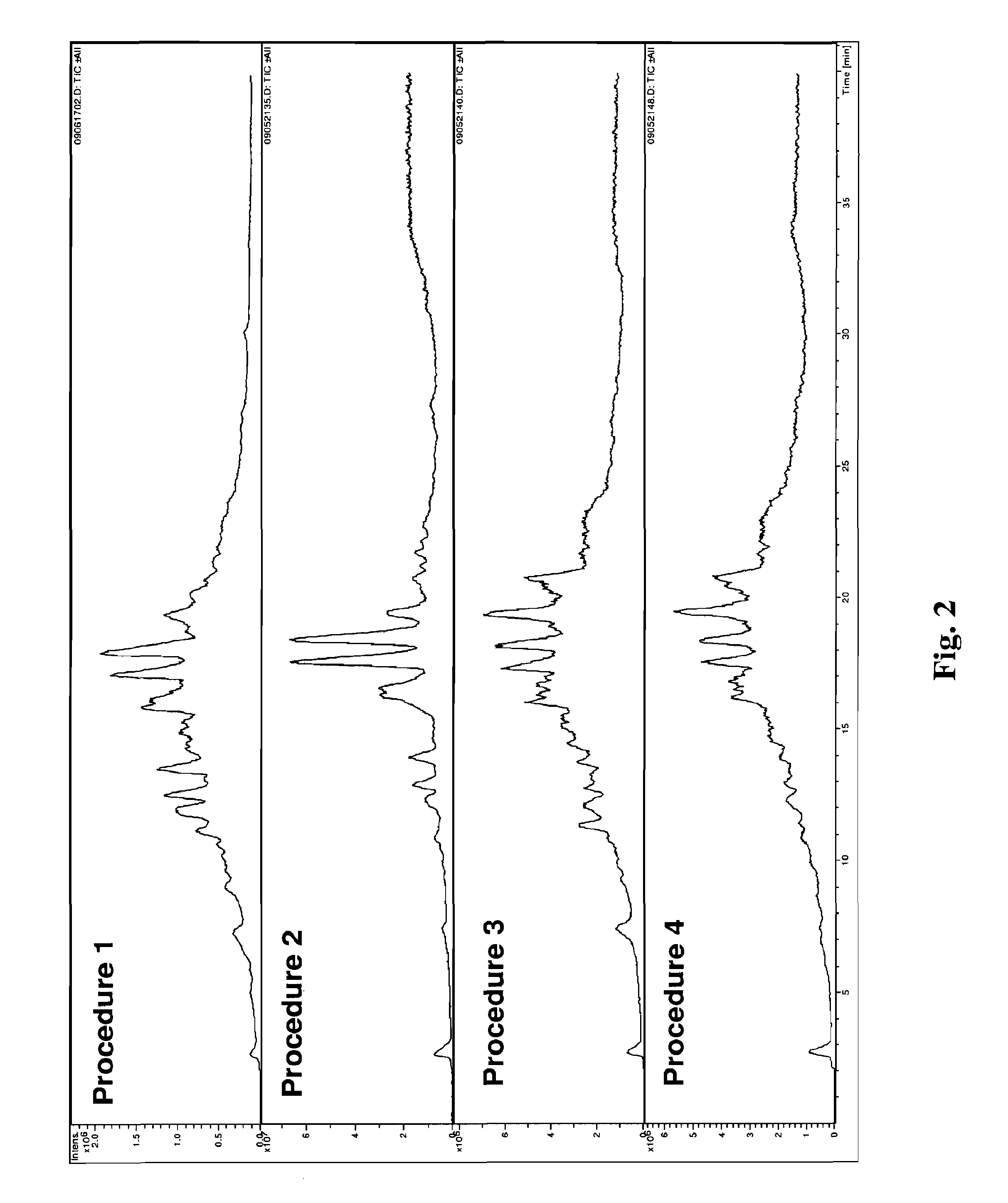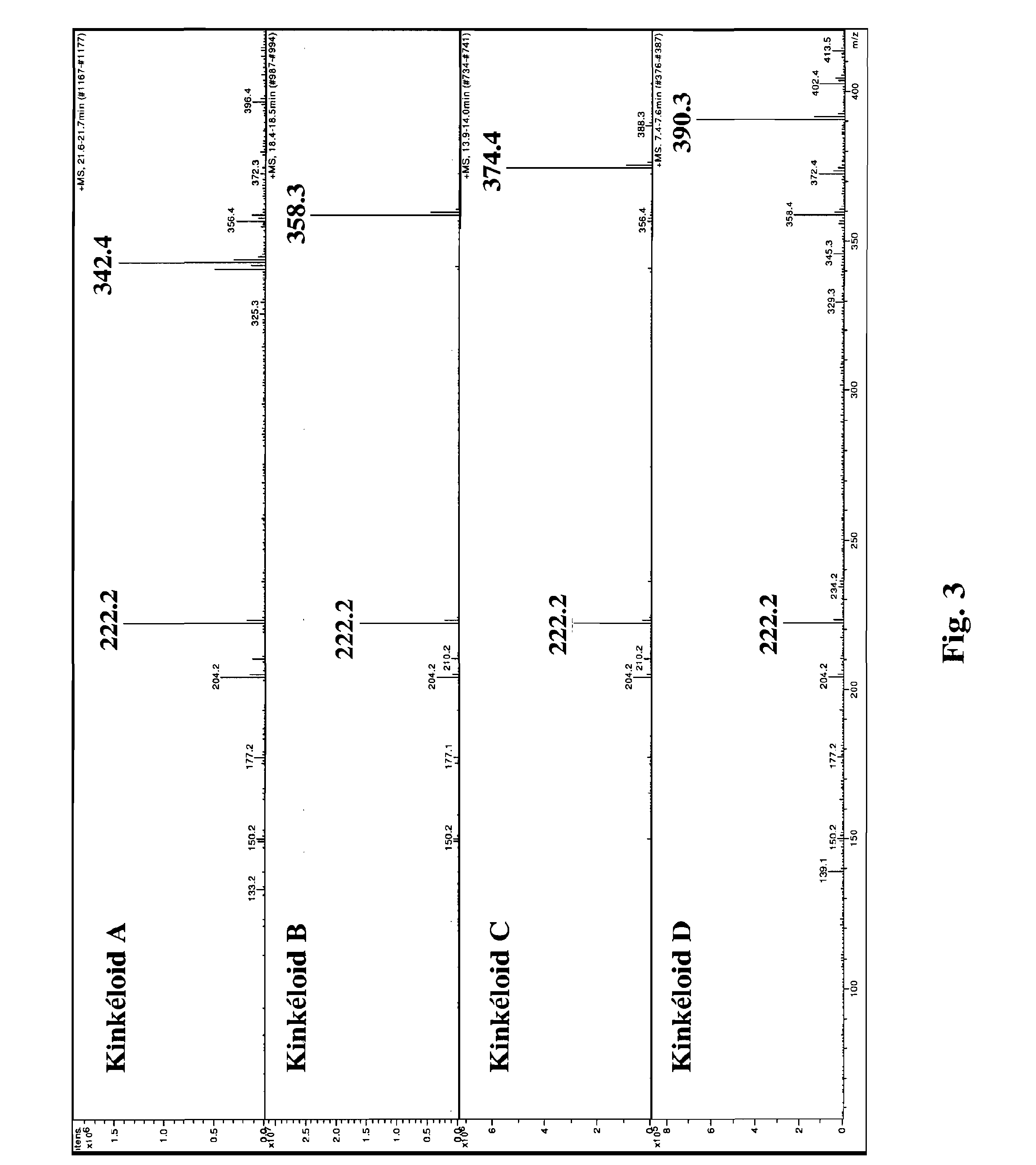Peperidine-flavan alkaloid compounds derived from African herb tea kinkeliba as anti-diabetic agents
a technology of peperidine and flavan, which is applied in the field of peperidineflavan alkaloid compounds derived from african herb tea kinkeliba as anti-diabetic agents, can solve the problems of ineffective insulin use of the body, no specific information confirming any application, and no studies documenting its validity and/or underlying reason, etc., and achieves an interesting anti-diabetic
- Summary
- Abstract
- Description
- Claims
- Application Information
AI Technical Summary
Benefits of technology
Problems solved by technology
Method used
Image
Examples
example 1
The First Extraction Procedure
[0140]Air-dried kinkéliba leaves, 1.04 kg, were extracted using above method (Extraction Method I) to obtain 252.3 g crude extract. The extract was then dissolved in water and partitioned between hexane (3×1.8 L), chloroform (3×1.8 L), ethyl acetate (3×2 L), and n-butanol (3×1.5 L), with the remaining water fraction totaling approximately 1.5 L. It was determined by LC-MS that the alkaloids were focused in the n-butanol fraction with a total weight of 80.66 g calculating to 7.75% from the starting materials. This fraction has been applied for further separation of the pure flavan alkaloids and biological study.
example 2
The Second Extraction Procedure
[0141]Air-dried kinkéliba leaves, 98.39 g, were extracted using above method (Extraction Method II) to obtain 34.7 g crude extract. The extract was then dissolved in approximately 800 mL of 3% acetic acid in water and filtered by vacuum to separate the non-polar components or non-alkaloids that did not dissolve. The acidic solution was brought from pH 3 to pH 9 by the addition of NH4OH (38% in water) and the solution was allowed to precipitate and settle for 60 min before filtering by vacuum. The filtrate was collected and washed with distilled water until it ran neutral while the precipitate was dissolved in methanol and dried. The total alkaloid extract weighed 10.8840 g calculating to 11.06% from the starting materials. All the steps, from the total extract to the total alkaloid extract were calibrated to the same concentration and analyzed by LC-MS to confirm the total alkaloid extraction technique.
example 3
The Third Extraction Procedure
[0142]Air-dried kinkéliba leaves, 102.93 g, were extracted using above method (Extraction Method II) to obtain 36.3 g crude extract. The extract was then dissolved in approximately 800 mL of 3% Acetic Acid in water and filtered by vacuum to separate the non-polar components that did not dissolve. The acidic solution was brought from pH 3 to pH 9 by the addition of NH4OH (38% in water) and the solution was allowed to precipitate and settle for 60 min before extraction with n-butanol (3×1 L) to extract the precipitated alkaloids. The total alkaloid fraction was dried and weighed 17.85 g calculating to 17.34% from the starting materials. All the steps, from the total extract to the total alkaloid extract were calibrated to the same concentration and analyzed by LC-MS to confirm the total alkaloid extraction technique.
PUM
| Property | Measurement | Unit |
|---|---|---|
| height | aaaaa | aaaaa |
| v/v | aaaaa | aaaaa |
| pH | aaaaa | aaaaa |
Abstract
Description
Claims
Application Information
 Login to View More
Login to View More - R&D
- Intellectual Property
- Life Sciences
- Materials
- Tech Scout
- Unparalleled Data Quality
- Higher Quality Content
- 60% Fewer Hallucinations
Browse by: Latest US Patents, China's latest patents, Technical Efficacy Thesaurus, Application Domain, Technology Topic, Popular Technical Reports.
© 2025 PatSnap. All rights reserved.Legal|Privacy policy|Modern Slavery Act Transparency Statement|Sitemap|About US| Contact US: help@patsnap.com



